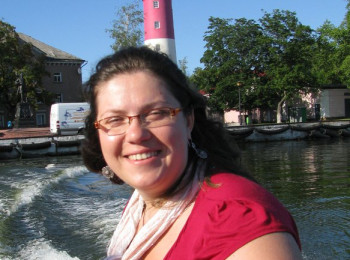This autumn and winter have been stormy. The storm in October did not do much damage to the Lithuanian coast, only chewed through the dunes of Nida, however, the one that raged last Friday and Saturday (February 18 and 19) was much worse: the water level in the entire Baltic Sea had risen by 60 cm and, although it slightly fell now, it will still continue to rise. On Monday and Tuesday, the water level in the Baltic Sea may rise by another 20 cm compared to Saturday’s value and reach +80 cm. These are forecasts of changes in the water level in the Baltic Sea by the Finnish Meteorological Institute and the Swedish Meteorological and Hydrological Institute. The forecasts promise the winds up to 25 m/s next week, while meteo.lt and other sources speculate that its gusts at the seaside may reach 30 m/s.
Water levels rising by 50 centimeters in the Baltic Sea are already considered a dangerous phenomenon, beause the water level that actually reaches the shores is even higher – the water near the shore is lifted by wind and waves. The winds of the western rhumb drive water to the shore, and 6-7 meter high waves also contribute to the overall water level.
Strong winds, waves, and low water levels are a refreshment for the coastal population. High water levels without wind and waves are the material provided by nature for articles on how the sea sinks our beaches. Meanwhile, high water levels and their combination with at least one of the two other components (let alone the combination of all the three components) lead to unpredictable consequences for the Lithuanian coast.
Unfortunately, it is especially difficult to predict the rise of the entire Baltic sea: the effect of the wind and waves are difficult to guess. Such situations can be expected in the autumn and winter, and they also occur in summer. let us remember 10 July 2017, when the sudden rise of the water of the Baltic Sea together with the relatively weak, but long-lasting winds from the west, almost washed away the dunes of Palanga.
On February 22, an even higher water level awaits us in the Baltic Sea, which will hold water in the Curonian Lagoon and the Danė, Rąžė, Šventoji, Nemunas Rivers, etc… The sea water will come even closer to the dunes, and the young high waves of the present storm will be strengthend by the swell from somewhere off the coast of Sweden or Germany from Saturday, which will raise the water level even higher. The promised waves from the south-west and west do not bode well for our coast, and I would suggest that we do not rush to assess the damage caused by this storm on Monday, as it could be even greater by the weekend. I recommend the residents of Klaipėda Old Town not to be in a hurry to hide rubber boots, and the people living near the water bodies connecting with the Baltic Sea, not to keep valuables in the basements.
.jpg) |
.png) |
.png) |




